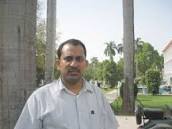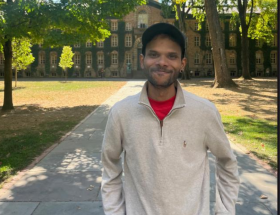Mohammad Sajjad
 On 18 January 2015, in the Ajitpur-Bahilwara, near Saraiya, in the district of Muzaffarpur in north Bihar, violence broke out. It killed nearly five people and almost all the 56 Muslim (Pasmanda) households in the village were looted and burnt. The immediate provocation was an inter-faith love affair: to the Hindutva zealots, was it a case of “Love Jihad” in reverse, or a case of “Honour Killing”?
On 18 January 2015, in the Ajitpur-Bahilwara, near Saraiya, in the district of Muzaffarpur in north Bihar, violence broke out. It killed nearly five people and almost all the 56 Muslim (Pasmanda) households in the village were looted and burnt. The immediate provocation was an inter-faith love affair: to the Hindutva zealots, was it a case of “Love Jihad” in reverse, or a case of “Honour Killing”?
A Hindu (caste of Mallah, fishermen) boy named Bhartendu Sahni, 20, (reportedly in love with a girl from Pasmanda Muslim community, both belonging to the same village, and both studying in the same L. S. College of Muzaffarpur), was missing since 9th January 2015 and a report against a Muslim, nicknamed Vicky, of the village was lodged with the Saraiya police about his kidnapping. The local police is alleged to have remained rather lethargic on this report despite the fact that this issue did carry a very high degree of communal volatility and sensitivity, given the fact that those accused of kidnapping were the Muslim girl’s brother, and that marriage of the two was being resisted at least from the side of the girl’s family, whereas step mother of the girl happens to be from a low caste Hindu, Kahaar community (palanquin-bearers).
Just a few months ago, ahead of the Chhath puja, in another village, Turkauliya, in the same Saraiya-Paroo thana area, there was acute communal tension between Hindu Mallahs and [Pasmanda] Muslims, and the violence could be avoided with prompt administrative interventions, prolonged persuasions, as also with the initiatives of the local people for inter-community dialogue. Here, a Muslim was alleged to have thrown a huge heap of human shit, taken out of the overflowing and congested tank of his septic tank, into the canal in which the Chhath puja is performed every year since ages. It is said that a Muslim lumpen asked him to do so, otherwise usually people make use of such human shit as highly fertile manure for their crops in the fields. This illiterate lumpen has got some political aspirations and keeps throwing tantrums to mobilize his co-religionists behind himself.
On 18 January 2015, a farmer of Ajitpur-Bahilwara, having gone to put fertilizer in his wheat-fields suddenly found out that dogs were digging to remove soil and suddenly a human hand came in sight. A heartrending, incendiary brutality! It was a dead body which could be identified and it turned out to be of the same boy, Bhartendu Sahni, whose kidnapping was reported to the Saraiya police, and this sparked off the violence. Ironically, the BJP MLA of Paroo-Saraiya, Mr Ashok Singh’s native village and his base of political operation and of everyday political transaction, is almost adjacent to this unfortunate village of Ajitpur-Bahilwara. There are reports alleging that the BJP MLA created some obstruction in letting the police reach the spot of violence. There are also reports that the girl’s brother Vicky is close to the BJP MLA Ashok Singh. Almost every village seems to have its own lumpens and criminals but, at least since June 2013, Muslim lumpens and criminals are acting in tandem with local BJP functionaries with an argument for Muslim consumption that these lumpens are working towards Chief Ministership of Syed Shahnawaz Husain.
A history of the politics and economy of the region may help us understand the simmering and recurring tensions.
It could possibly be an irony that this village is very near to the historic village of Vaishali, the birth place of Lord Mahavir, and associated deeply with Lord Buddha too, both the saints of 6th century B.C. are known for spreading the message of peace and non-violence. There is also a popular shrine of 15th century sufi saint Shaikh Qazin Shuttari (d. 1495). Another irony: this unfortunate alumnus of the L S College has been killed brutally as a result of communal prejudices whereas the college, established in 1899, is an outcome of strong Hindu-Muslim cooperation in the movement for modern education, launched in 1868 by Syed Imdad Ali (died 8 August 1886, buried in Bhagalpur), the then Subordinate Judge of Muzaffarpur (Tirhut), and a friend of his counterpart in Aligarh, Sir Syed Ahmad (1817-98).
Significantly, at least in post-independence period, Muzaffarpur has remained almost absolutely free from communal violence. Only those parts of Muzaffarpur, which now constitute the districts of Sitamarhi and Sheohar, had seen a few major communal violence incidents in the post-independence period. Even in the late colonial period, only major communal violence in Muzaffarpur was the one in the village of Benibad (September 1946), and here too the immediate cause was inter-faith marriage. A Muslim of the village Benibad, Ali Hasan, working in Calcutta had married a Hindu girl of Calcutta named Kalyani Dey (renamed as Nur Jahan). This provoked the local people and with the initiatives of the Arya Samaj a major violence broke out. The police could not control it as quickly because of the mechanical breakdown of the truck carrying a police troop. (I have given these details in my book on Muzaffarpur, 1857-2012, Contesting Colonialism and Separatism: Muslims of Muzaffarpur since 1857, Primus, Delhi, 2014).
However, in recent years, more particularly, ever since the breakdown of coalition between the BJP and the JDU in Bihar in June 2013, things have started changing for worse very rapidly. India witnessed major communal tension and violence during the 1920s, 1940s, 1980s, and ever since then communal tension has been a sad reality of our lives besides the caste based oppressive discriminations which has been existing since ancient times in our civilization. Incidentally, these were the decades when growing affluence among the Muslims created middle classes, and thereby ensued competitions and rivalries in all walks of life—education, politics, share in power, trade and manufacturing, etc.
The Pasmanda Muslims of Ajitpur-Bahilwara village have also acquired perceptible prosperity only recently. They may not be acquiring much of education but their trade in tyre-tube repair and sales, and in motor-parts, quite a few in Asansol, and few others in blue collar jobs in the Middle East, has also been fuelling aspirations of shares in the structures and processes of power, particularly in the Panchayat elections. This was already becoming an eye-sore among a section. Another cause of economic conflict is: in the local haats and markets, the poultry chicken sellers are usually Muslims, but of late, some Hindu Mallahs have also jumped into this business. This should also be brought to fore that in the Bihar villages of today, migrations for livelihood have made male presence very minimal, and some of the few unemployed youth who stay here in villages, also degenerate to become lumpen-criminal cum broker of nationalised Banks, of police thanas, and in the Community Development Blocks from where the Panchayat development funds and the funds for social welfare schemes flow.
There are whispers and gossip among the villagers that such lumpens-criminals also indulge in flesh trade and this is said to be one of the ways of bribing sections of the local officials, police and politicians. There are reports that the Guest House of the Bihar government’s Tourism Department in Vaishali is often misused illegally for such ugly and heinous activities. These local functionaries, in order to protect such criminals, often mislead the higher echelons of the administration and this is how containing the criminals is becoming increasingly difficult. It is said that one can very easily find a ‘Fortwyn’ injection, which is meant for making the person (to be kidnapped) instantly unconscious, in the local medicine shops. In my abovementioned book on the Muslims of Muzaffarpur, I have given a long chapter on a Muslim inhabited village, Turkauliya, profiling a criminal of the village who grew from strength to strength through active support of his community as well as the local officials of the state. Such outlaws eventually turn into politicians very soon. Thus, crime, violence, and such ugly phenomena are increasingly getting deeply embedded in our social fabric.
Thus far, in most cases of the communal riots, the rioters have gone scot free. In fact, one of the biggest failures of the Indian democracy has been the utter failure of the criminal justice system in punishing the rioters and riot-mongers.
In today’s Muzaffarpur comprising of the Muzaffarpur and Vaishali Lok Sabha (Parliamentary) seats, the Hindu Ati Pichhrha caste of Mallahs (carrying surnames of Nishad, Sahni, and sometimes Manjhi also) have become the “Dominant Caste”, replacing the Rajputs and the Bhumihar-Brahmans, and Yadavas, Koeris, Kurmis too. Many times, Muzaffarpur has elected its Parliamentarian from the community of Mallah, including the incumbent one from the BJP. In the Vaishali Lok Sabha (Ajitpur-Bahilwara of Saraiya-Paroo is in the Vaishali Lok Sabha, which has elected a muscleman of notoriety, Rama Singh of LJP in alliance with the BJP, defeating RJD’s Prof. Raghuvansh Prasad Singh), the JDU candidate in 2014 was a Mallah and unlike most of Bihar’s parliamentary seats, the JDU candidate from Vaishali had secured a very significant number of votes in May 2014.
This region is also infested with the Maoists and quite often press statements from local politicians would complain that most of Maoists are Mallahs. Cutting across religious and caste-barriers, the local population would express certain degree of fear about the Mallahs, their community solidarity and their proneness to violence. This is a kind of stereotype about the Mallahs that exists among the local population. In this way, the Ajitpur-Bahilwara violence may not be said to be a religious violence in a way we have been understanding it conventionally, as non-Mallah Hindus not only remained away from the violence, they are also extending all possible help in protecting the people and in relief measures. In fact, today, the local people – Hindus and Muslims – vehemently react against the media for portraying it as a conventional religious strife.
Therefore, if at all there is any attempt by any communal organization to create Hindu-Muslim polarization or an attempt to create a communal wedge between the Ati Picchrha communities of Hindus & Muslims for the purposes of the forthcoming Assembly elections in Bihar in October-November 2015, then it could possibly be seen as a gratifying silver lining as both Hindus and Muslims stand united to get the culprits of Ajitpur-Bahilwara booked.
The Saraiya police was allegedly lethargic in arresting the killers of the boy in love which degenerated and spiralled into a more sinister group violence, but the state response to this violence has since then been very prompt.
Reports are there that quite a large number of the accused have been arrested including the alleged killers of the murdered boy. High placed enquiries are underway, payment of compensation, and relief measures from the state are also said to be satisfactory in an unprecedented way. Public opinion in the locality is displaying a genuine outrage against the whole incident. This horrific episode of 18 January 2015 in Bihar’s Muzaffarpur is quite different from what happened in UP’s Muzaffarnagar in September 2013. We probably don’t have competitive efforts of politicians to polarize the two communities. Akhilesh Yadav led administration as well as the riot-mongers among our political formations need to learn a few lessons from this response of state and society after this violence in Bihar’s Muzaffarpur.
~~~
Mohammad Sajjad is Assistant Professor, Centre of Advanced Study in History, Aligarh Muslim University (AMU), Aligarh.










